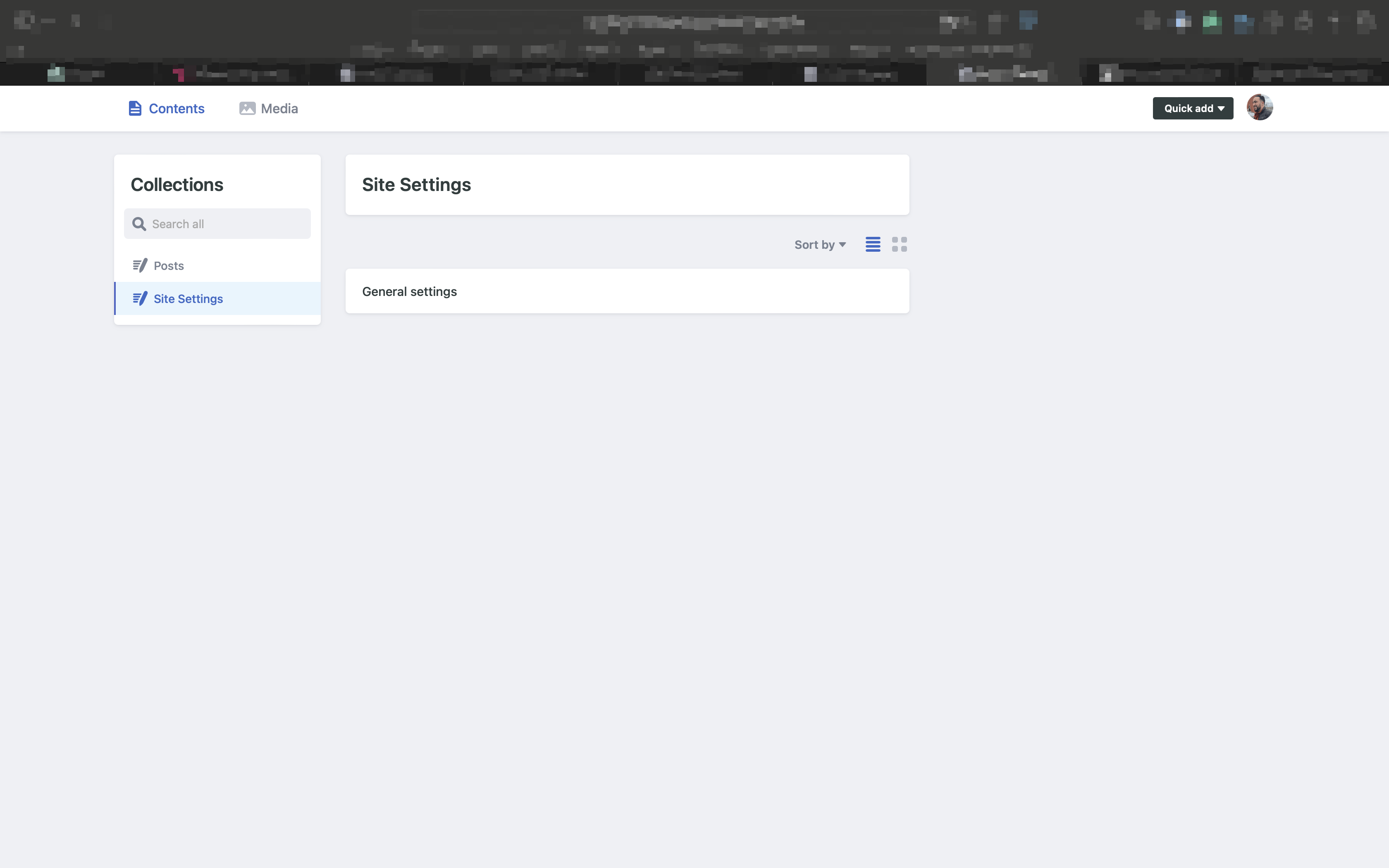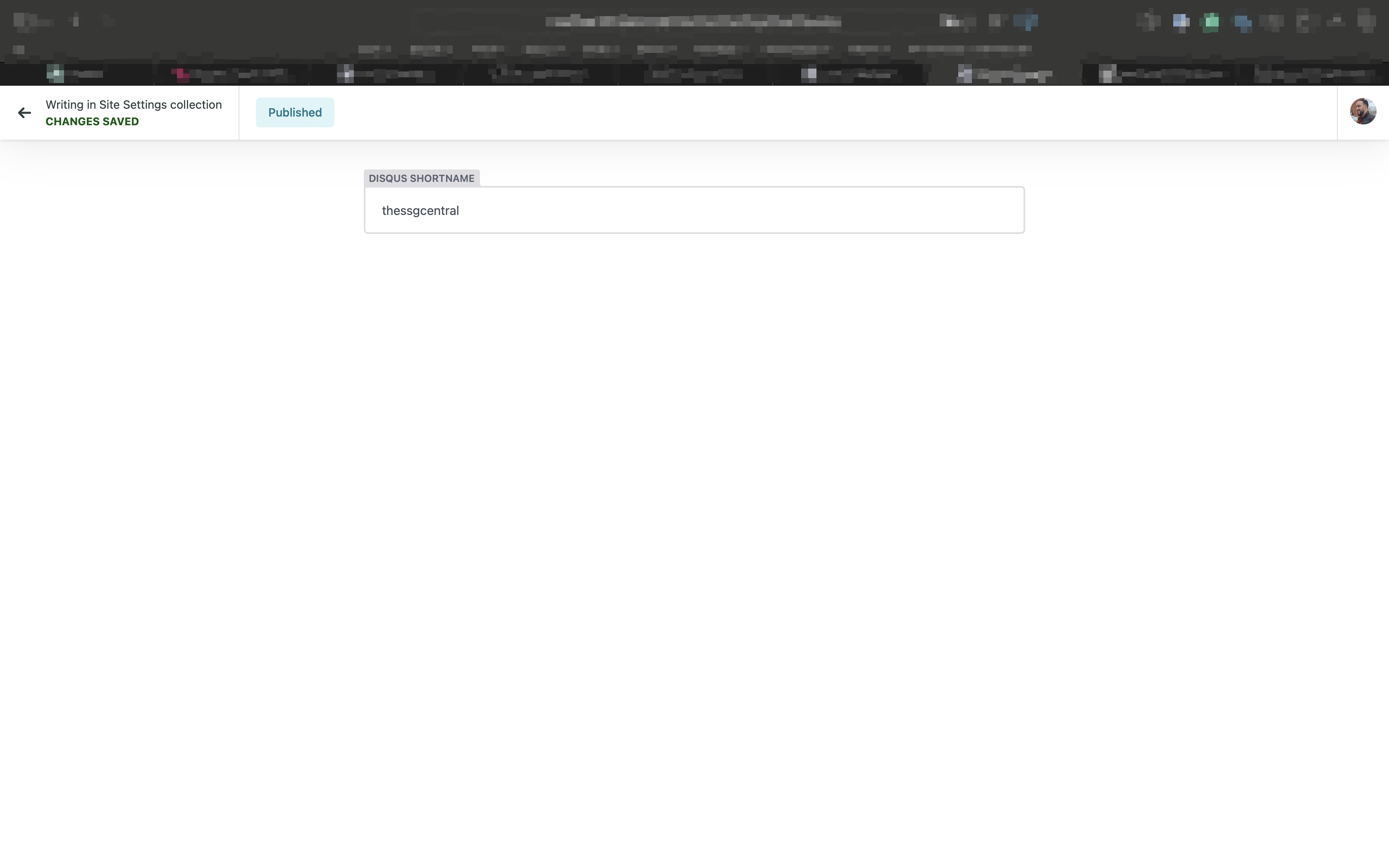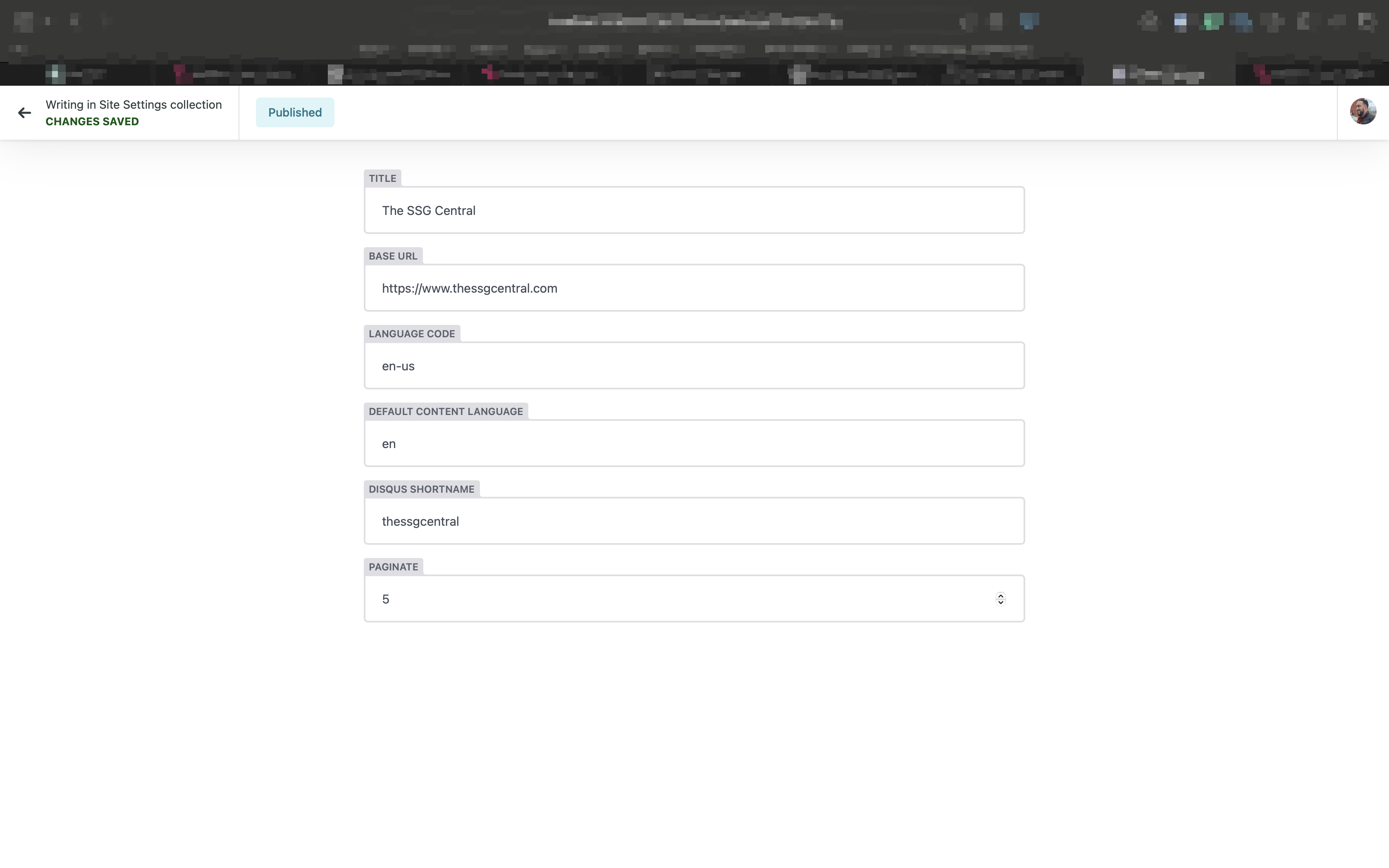While building this site, I often find changing some of its configurations necessary. As I’m working with an SSG, most of these settings must be done with Git and Github. Although I’m a developer and use Git and GitHub every day, this might be a little unpractical if you are not working on a computer, for example, and need to change through your smartphone. And I thought to myself: if only there were a way to change these settings through the Decap CMS.
Well, there is. And it’s quite easy.
But before explaining how to do it, I need to explain some topics to you.
Folder Collections vs Files Collections
Recently, I wrote an article showing how we could integrate the Hugo SSG with the Decap CMS. In the end, we build this config.yml, saved in the static/admin of my Hugo theme:
backend:
name: github
repo: lucasayb/the-ssg-central
branch: main
site_domain: thessgcentral.com
media_folder: "static/uploads" # Adjust based on your media storage location
public_folder: "/uploads" # URL path for accessing media
collections:
- name: "posts" # This is the name used in the URL
label: "Post" # This is the singular name of the content type for the UI
folder: "content/post" # The folder where your posts markdown files will be saved
create: true # Allows users to create new documents in this collection
slug: "{{year}}-{{month}}-{{day}}-{{slug}}" # Filename template for new posts
fields: # List of fields for the front matter
- { label: "Title", name: "title", widget: "string" }
- { label: "Description", name: "description", widget: "text" }
- { label: "Date", name: "date", widget: "datetime" }
- { label: "Image", name: "image", widget: "image", required: false }
- { label: "Hidden", name: "hidden", widget: "boolean", default: false }
- { label: "Comments", name: "comments", widget: "boolean", default: true }
- { label: "Draft", name: "draft", widget: "boolean", default: false }
- { label: "Weight", name: "weight", widget: "number" }
- { label: "Body", name: "body", widget: "markdown" }
What we’ve done here is build the file for the basic configuration of the Decap CMS. When we have a folder like _posts in Jekyll or content/posts (or content/post depending on your theme) in Hugo, we can have one or many markdown files inside the folder, and we want to add, edit, or remove the articles inside it through the Decap CMS. And when we do that, we are using a folder collection. You can have folder collections to manage posts, categories, and tags, and inside each folder, you will have many markdown files, and everything will be editable through the CMS.
A file collection is slightly different. This is a _config.yml file to edit a Jekyll website:
title: Lucas Yamamoto
email: lucasayb97@gmail.com
description: >- # this means to ignore newlines until "baseurl:"
My cool description
baseurl: ""
url: "https://www.lucasyamamoto.com"
twitter_username: lucasayb
github_username: lucasayb
linkedin_username: lucasayb
instagram_username: lucasyamamoto1997
disqus:
shortname: lucas-yamamoto
show_excerpts: true
theme: minima
plugins:
- jekyll-redirect-from
- jekyll-feed
minima:
skin: dark
date_format: "%b %-d, %Y"
Using the file collection, I can edit this single file without adding a new one or removing this existing one through a section in my Decap CMS. This allows us to change the Disqus short name, the site title, description, social networks, and everything that can be edited through this file.
Creating a file collection
On my particular Hugo theme, I have a file located in config/_default/config.toml, with the following content:
# Change baseurl before deploy
baseurl = "https://www.thessgcentral.com"
languageCode = "en-us"
paginate = 5
title = "The SSG Central"
# Theme i18n support
# Available values: en, fr, id, ja, ko, pt-br, zh-cn, zh-tw, es, de, nl, it, th, el, uk, ar
defaultContentLanguage = "en"
# Set hasCJKLanguage to true if DefaultContentLanguage is in [zh-cn ja ko]
# This will make .Summary and .WordCount behave correctly for CJK languages.
hasCJKLanguage = false
# Change it to your Disqus shortname before using
disqusShortname = "thessgcentral"
Let’s say that I want to have the power to change the disqusShortname of the site through the Decap CMS. We can just change the file that we built so far to have the following:
backend:
name: github
repo: lucasayb/the-ssg-central
branch: main
site_domain: thessgcentral.com
media_folder: "static/uploads" # Adjust based on your media storage location
public_folder: "/uploads" # URL path for accessing media
collections:
- name: "posts" # This is the name used in the URL
label: "Post" # This is the singular name of the content type for the UI
folder: "content/post" # The folder where your posts markdown files will be saved
create: true # Allows users to create new documents in this collection
slug: "{{year}}-{{month}}-{{day}}-{{slug}}" # Filename template for new posts
fields: # List of fields for the front matter
- { label: "Title", name: "title", widget: "string" }
- { label: "Description", name: "description", widget: "text" }
- { label: "Date", name: "date", widget: "datetime" }
- { label: "Image", name: "image", widget: "image", required: false }
- { label: "Hidden", name: "hidden", widget: "boolean", default: false }
- { label: "Comments", name: "comments", widget: "boolean", default: true }
- { label: "Draft", name: "draft", widget: "boolean", default: false }
- { label: "Weight", name: "weight", widget: "number" }
- { label: "Body", name: "body", widget: "markdown" }
- label: "Site Settings"
name: "settings"
files:
- label: "General settings"
name: "config"
editor:
preview: false
file: "config/_default/config.toml"
fields: # List of fields for the category front matter
- {label: "Disqus Shortname", name: "disqusShortname", widget: "string"}
Saving this file into the static/admin/config.yml, you have two options:
You can either test locally (depending on what SSG you are using) or you can commit and push to Github to see the settings in your admin with the following command:
$ git add .
$ git commit -m "adds the file collection for the settings"
$ git push -u origin main
We can wait for the build time of our site and then, accessing the Decap CMS, we can see that a new section has appeared in the sidebar:

Clicking on Site settings, we can see that there is another section called General settings and after entering it, we have the following view:

We can then edit our Disqus Shortname through the panel.
Now let’s understand the code that we implemented:
- label: "Site Settings"
name: "settings"
If you already realized, label is the name that appears in the UI. name is actually how this collection is visualized through the URL of the CMS.
files:
This line just defines that we are working with file collection. We can define as many files as we want, as it’s a list of files, not a single one. This is useful when your site’s configurations is divided into many files
- label: "General settings"
name: "config"
These are, once again, the label, the UI name of the settings that we are working on, and the name, the parameter that appears in the URL.
editor:
preview: false
There is no need to see in real-time in the preview panel what changes we are doing.
file: "config/_default/config.toml"
You saw before that we mentioned that we could edit the _config.yml, a YAML file, of a Jekyll theme. And if you see carefully, this is actually a TOML file. Turns out that Decap CMS accepts a lot of extensions. They can all be found in here.
fields: # List of fields for the category front matter
- {label: "Disqus Shortname", name: "disqusShortname", widget: "string"}
Finally, we have the fields. Here we can add any fields that we want, as long as we respect the name and the type of the field, which through the Decap CMS the type is defined by the widget.
If I add only the fields that are in the config.toml file that I provided before, I can have the following:
- {label: "Title", name: "title", widget: "string"}
- {label: "Base URL", name: "baseurl", widget: "string"}
- {label: "Language Code", name: "languageCode", widget: "string"}
- {label: "Default Content Language", name: "defaultContentLanguage", widget: "string"}
- {label: "Disqus Shortname", name: "disqusShortname", widget: "string"}
- {label: "Paginate", name: "paginate", widget: "number", value_type: "int" }
The only field in this list that has a different widget is the Paginate, which uses the widget number, with the value_type of int.
And the complete file would be:
backend:
name: github
repo: lucasayb/the-ssg-central
branch: main
site_domain: thessgcentral.com
media_folder: "static/uploads" # Adjust based on your media storage location
public_folder: "/uploads" # URL path for accessing media
collections:
- name: "posts" # This is the name used in the URL
label: "Post" # This is the singular name of the content type for the UI
folder: "content/post" # The folder where your posts markdown files will be saved
create: true # Allows users to create new documents in this collection
slug: "{{year}}-{{month}}-{{day}}-{{slug}}" # Filename template for new posts
fields: # List of fields for the front matter
- { label: "Title", name: "title", widget: "string" }
- { label: "Description", name: "description", widget: "text" }
- { label: "Date", name: "date", widget: "datetime" }
- { label: "Image", name: "image", widget: "image", required: false }
- { label: "Hidden", name: "hidden", widget: "boolean", default: false }
- { label: "Comments", name: "comments", widget: "boolean", default: true }
- { label: "Draft", name: "draft", widget: "boolean", default: false }
- { label: "Weight", name: "weight", widget: "number" }
- { label: "Body", name: "body", widget: "markdown" }
- label: "Site Settings"
name: "settings"
files:
- label: "General settings"
name: "config"
editor:
preview: false
file: "config/_default/config.toml"
fields: # List of fields for the category front matter
- {label: "Title", name: "title", widget: "string"}
- {label: "Base URL", name: "baseurl", widget: "string"}
- {label: "Language Code", name: "languageCode", widget: "string"}
- {label: "Default Content Language", name: "defaultContentLanguage", widget: "string"}
- {label: "Disqus Shortname", name: "disqusShortname", widget: "string"}
- {label: "Paginate", name: "paginate", widget: "number", value_type: "int" }
And now, if we take a look at how the admin is being shown, we have the following view:

A few examples of configuration for some SSGs
Jekyll
For the _config.yml
backend:
name: github
repo: <your-github-repo> # Replace with your GitHub repository
branch: main
media_folder: "assets/images" # Adjust based on your media storage location
public_folder: "/images" # URL path for accessing media
collections:
- name: "settings"
label: "Settings"
delete: false # Prevents file deletion from the CMS
editor:
preview: false
files:
- label: "General Settings"
name: "config"
file: "_config.yml" # Adjust the file location based on your SSG and structure
fields:
- { label: "Title", name: "title", widget: "string" }
- { label: "Email", name: "email", widget: "string" }
- { label: "Description", name: "description", widget: "text" }
- { label: "Base URL", name: "baseurl", widget: "string" }
- { label: "URL", name: "url", widget: "string" }
- { label: "Twitter Username", name: "twitter_username", widget: "string" }
- { label: "GitHub Username", name: "github_username", widget: "string" }
- { label: "LinkedIn Username", name: "linkedin_username", widget: "string" }
- { label: "Instagram Username", name: "instagram_username", widget: "string" }
- { label: "Disqus Shortname", name: "disqus_shortname", widget: "string" }
- { label: "Show Excerpts", name: "show_excerpts", widget: "boolean", default: true }
- { label: "Theme", name: "theme", widget: "string" }
- { label: "Minima Skin", name: "minima_skin", widget: "string", default: "dark" }
- { label: "Date Format", name: "date_format", widget: "string" }
fields:
- { label: "Plugins", name: "plugins", widget: "list", default: ["jekyll-redirect-from", "jekyll-feed"] }
Hugo
For the hugo.toml, right after you create the site:
backend:
name: github
repo: <your-github-repo> # Replace with your GitHub repository name
branch: main
media_folder: "static/img" # Adjust based on your media storage location
public_folder: "/img" # URL path for accessing media
collections:
- name: "config"
label: "Site Configuration"
delete: false # Prevents file deletion from the CMS
editor:
preview: false
files:
- label: "General Settings"
name: "config"
file: "hugo.toml" # Adjust the file location based on your Hugo structure
fields:
- { label: "Base URL", name: "baseURL", widget: "string" }
- { label: "Language Code", name: "languageCode", widget: "string" }
- { label: "Title", name: "title", widget: "string" }
I can provide other examples, depending on what you request.
For today, that’s it. I hope this post was enough to cover some of your doubts. Please let me know if you have any questions!





Comments